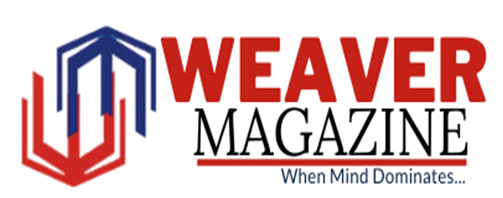Why Efficiency in Payroll and HR Matters for Small Businesses
Small businesses often juggle financial constraints, limited staffing, and hefty compliance requirements. Payroll and HR tasks such as processing wages, tracking PTO, and maintaining records can quickly become overwhelming without the right systems in place. Manual procedures and clunky interfaces not only eat up valuable hours but also leave room for human error. Adding automation and user-friendly tools helps ensure accuracy, while also boosting employee confidence in the reliability of payroll. In turn, smoother processes contribute to stronger workplace morale and long-term efficiency.
Streamlined systems can transform a company’s operations by minimizing delays and interruptions and taking the time to find platforms that reduce clicks save time, allowing small business owners and their teams to focus on growth rather than paperwork. Adopting a genuinely intuitive platform not only enhances operational efficiency but also cultivates trust and satisfaction among users. Ultimately, a thoughtful, user-friendly approach becomes an investment in both productivity and employee well-being.
The Hidden Cost of Extra Clicks and Steps
Every extra mouse click or unnecessary page load in an HR or payroll system adds up over the days and weeks. These inefficiencies slow down onboarding, payroll runs, time-off requests, and other daily activities. HR professionals spend up to a quarter of their workweek on administrative tasks that could be automated or significantly shortened with more user-friendly tools. Inefficient payroll and HR systems don’t just waste time—they silently drain resources and create bottlenecks as your business scales. Regularly reviewing your processes helps ensure your tech supports your team’s productivity, not hinders it.
Features to Look for in User-Friendly HR and Payroll Platforms
Choosing the right software starts with knowing which features truly make a difference. Intuitive dashboards enable users to quickly access crucial information, while automated workflows minimize manual intervention. Mobile access enables staff and managers to approve timesheets, review pay stubs, or update records on the go, a necessity in today’s flexible work environments. According to U.S. News, businesses should evaluate payroll systems not only for convenience but also for compliance and scalability.
Platforms with clear interface design and step-by-step processes reduce user mistakes, a key to staying compliant with ever-changing tax and employment laws. Simplified systems are easier to teach, empowering every team member to get up to speed quickly and minimizing the overhead of onboarding and training.
How Reviews Can Guide Smarter Software Choices
Before committing to a platform, it’s wise to study peer reviews from other small businesses. Look for detailed feedback on the ease of use, reliability, and the flow of critical functions, such as payroll processing and benefits administration. Reviews often mention unexpected stumbling blocks or hidden benefits not covered in official product demos.
Real-world feedback provides valuable insights into potential time savings or recurring frustrations.
Step-by-Step: How to Quickly Assess Usability in Payroll and HR Systems
Checklist for Demoing New Software
- How many steps does it take to run payroll or generate a key report?
- Are everyday tasks (like adding a new employee or approving a leave request) straightforward?
- Is navigation consistent and logical throughout the system?
- Can you easily access the necessary information from mobile devices?
- Is customer support responsive and knowledgeable?
Questions to Ask Before Making a Decision
- Does the platform integrate with your current accounting or ERP software?
- Are updates and legal compliance managed automatically?
- Can reports and exports be customized easily?
Integrating Efficient Tools With Your Existing Workflow
Successful adoption depends on planning and preparation. Begin by testing compatibility with a pilot group to ensure it aligns with your existing processes before rolling it out to the entire team—consistent communication about the why and how of new software reduces resistance and builds buy-in.
Invest in clear training sessions, quick reference guides, and ongoing support. Even the most intuitive platforms benefit from supplemental onboarding to get everyone comfortable with the new system’s features and shortcuts.
Common Pitfalls to Avoid When Choosing HR and Payroll Solutions
Flashy features or advanced capabilities may be tempting, but they can distract from core usability. When businesses choose tools based solely on a long list of features, they risk adopting platforms that look good on paper but are frustrating in daily use. Small business owners frequently cite lack of user-friendliness as a top reason for platform dissatisfaction—even when those platforms are touted as “feature-rich.” Prioritize workflow efficiency and intuitive interfaces over rarely used extras to avoid the all-too-common fate of underutilized software.
Continuous Improvement: Reviewing Your HR Systems Regularly
As your business grows, periodic reviews of your HR and payroll systems are essential. Set regular check-ins—quarterly or bi-annually—to ensure the software keeps pace with your needs and new regulatory demands. Involve both users and administrators in reviewing workflows and reporting bugs or friction points.
Track key metrics such as hours spent on payroll each month, time saved on new employee onboarding, and error rates. Use this data to identify further opportunities for automation or process optimization. Continuous improvement transforms HR and payroll management from a time sink into a strategic advantage.
Building Long-Term Success Through Efficient Payroll and HR Systems
Efficient payroll and HR systems are more than just back-office tools—they have a direct impact on employee satisfaction, compliance, and overall business growth. For small businesses, mainly, intuitive platforms help minimize errors, reduce administrative strain, and free up time to focus on strategic priorities. By prioritizing user-friendly features, learning from peer reviews, and regularly reviewing workflows, organizations can ensure their systems remain both reliable and adaptable. Ultimately, the correct payroll and HR solution becomes a long-term investment in smoother operations, stronger morale, and sustainable success.









